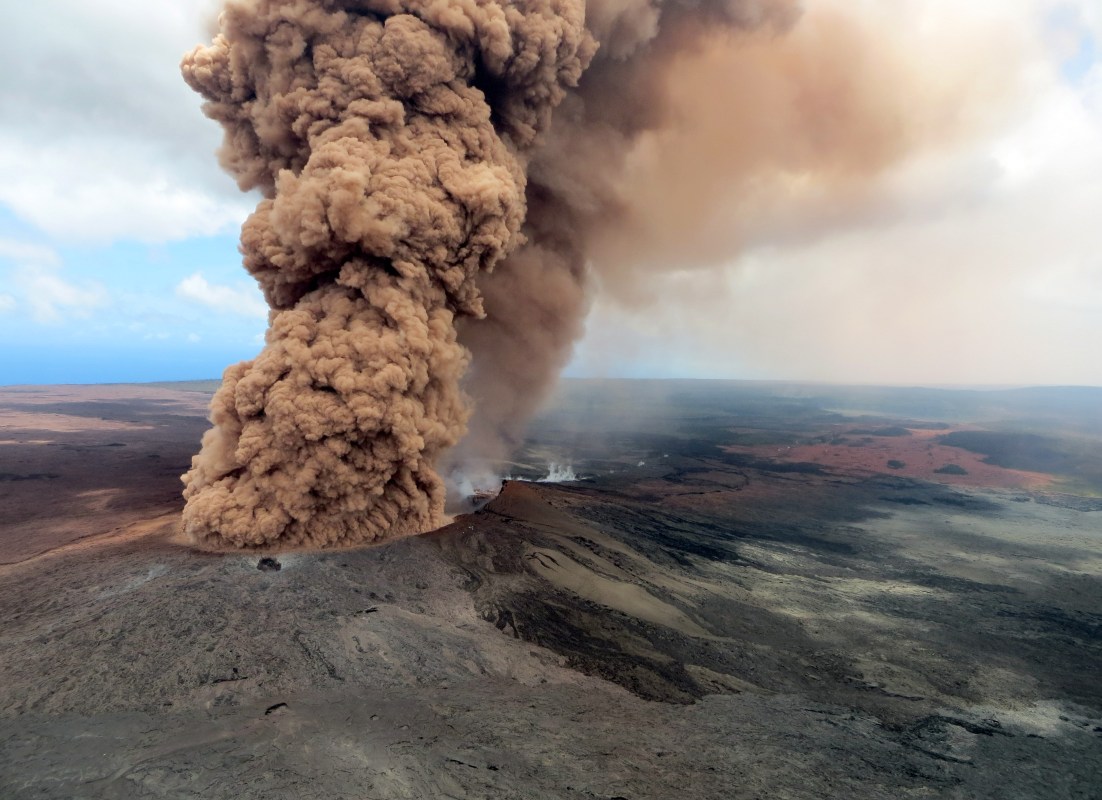Hawaii’s Kilauea volcano has been spewing lava since Thursday, May 3, and has destroyed 26 homes since then. Kilauea is a shield volcano, which means it emits fluid basalt lava and has a broad dome shape, instead of a steep peak. But this is not Kilauea’s first massive eruption. This week’s activity is just one of 61 recorded eruptions in the volcano’s cycle. In fact, Kilauea has actually been erupting on a regular basis since 1983, making it the longest continuously erupting volcano in the world, according to the U.S. Geological Survey, as reported by Esquire.
In January of 1983, initial eruptions on Kilauea’s East Rift Zone created a 4-mile-long fissure on the Big Island’s southeastern corner. A few months later, the eruptions focused on a single vent and eventually lava fountains created a cinder-and-spatter cone called Pu’u’O’o. The lava from Pu’u’O’o eventually destroyed 16 houses. In March 1990, another lava field destroyed more than 100 homes, plus a church and a store, burying them under 80 feet of lava. Over the next 15 years, activity reverted back to Pu’u’O’o and the result has been a continuous, but quiet, effusion of lava entering the ocean. Four hundred and eighteen acres of land have been added to Hawaii’s Big Island by the new, cooled rock has settled into and risen above the surface of the ocean. And in 2010 and 2011, lava flows destroyed more homes that had been built on top of the previous lava flows in Kalapana.
Thanks for reading InsideHook. Sign up for our daily newsletter and be in the know.


















